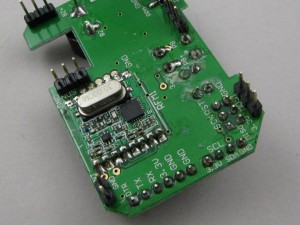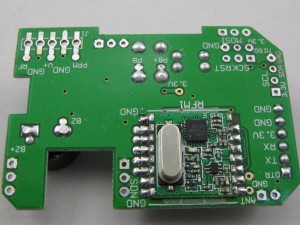Open LRS Transmitter
 Recently I have been using the Hobbyking Orange 433MHz system with later OpenLRS firmware. I made an improved antenna for the plane but have been using the standard “rubber-duckie” on the transmitter. After swapping the transmitter antenna I found that range was only 100-200 meters, and then that there was nothing inside the antenna. I guess the small 50mm spring-rod fell off during production. Recently I have been using the Hobbyking Orange 433MHz system with later OpenLRS firmware. I made an improved antenna for the plane but have been using the standard “rubber-duckie” on the transmitter. After swapping the transmitter antenna I found that range was only 100-200 meters, and then that there was nothing inside the antenna. I guess the small 50mm spring-rod fell off during production.
It didn’t matter and there was little danger as the telemetry-beeper indicated a fault before it became a problem.
Having some time ago modified the Turnigy 9X transmitter to include a PL259 antenna socket in place of the original telescopic antenna, I decided to fit the PC Board from the OpenLRS module inside the radio rather than plugging it in the back of the transmitter. This allows the module to take advantage of the PL259 connector and accept a variety of antennas.
Using a OpenLRS receiver as a transmitter was one option, but I decided to strip the module and clean up and install the PCB. This was simpler as the transmitter already had buzzer driver LEDs and a reasonable voltage regulator on-board.
 The board needed a good clean up and I found one of the module edge solder joints not soldered. I remounted the module, removed unused pin-headers and cleaned off the flux residue. The board needed a good clean up and I found one of the module edge solder joints not soldered. I remounted the module, removed unused pin-headers and cleaned off the flux residue.
Without looking at the data I think this is one or the T/R select control lines. There must have been some connection or the default state was OK, because it had been working.
The HopeRF module was mounted up on a silicon pad and using large untidy solder blobs to secure and connect it. I replaced the thicker silicon with a thin mylar sheet.
|